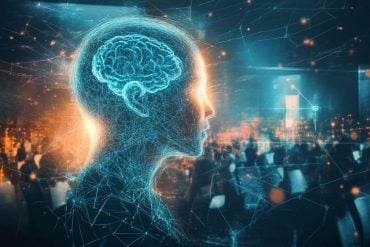In recent years, there has been an increase in emergence and use of a variety of new drugs, so-called “novel psychoactive substances” (NPS) in the US and worldwide. However, there is little published survey data estimating the prevalence of use in the US. Media reports about use of new drugs such as “Spice” (“synthetic marijuana”) and “bath salts” such as “Flakka” are now common, yet very few health surveys ask about use of such drugs.
A new study, published in Drug and Alcohol Dependence by researchers affiliated with New York University’s Center for Drug Use and HIV Research (CDUHR), examined self-reported use of 57 different new drugs and found that prevalence of use increased from 2009 to 2013. Use of these new drugs was most common among males, whites, older individuals, those of lower income, and among those residing in cities. Use of various other illicit drugs such as LSD, cocaine, and ecstasy/MDMA (a.k.a.: “Molly”) was very common among users.
“About 1% of subjects self-reported any use of the 57 new drugs we examined,” said Joseph J. Palamar, PhD, MPH, a CDUHR affiliated researcher and an assistant professor of Population Health at NYU Langone Medical Center (NYULMC). “Use of psychedelic tryptamines–primarily DMT–was most common, followed by psychedelic phenethylamines and synthetic cannabinoids.”
The article, “Self-Reported Use of Novel Psychoactive Substances in a US Nationally Representative Survey: Prevalence, Correlates, and a Call for New Survey Methods to Prevent Underreporting,” used data on self-reported use of new drugs from the National Survey of Drug Use and Health (NSDUH) (2009-2013), a national representative sample of non-institutionalized individuals in the US. Subjects were asked to provide names of (non-traditional) drugs they used that they were not specifically asked about. The researchers examined lifetime prevalence and sociodemographic correlates of self-reported use of new and uncommon synthetic drugs among subjects ages 12-34-years-old (N=213,076).
The researchers found that almost all (≥95%) subjects who reported use of a new drug also reported lifetime use of alcohol, marijuana, or cigarettes, and lifetime use of ecstasy (79.4%), opioids (79.1%), cocaine (74.3%), and LSD (73.7%) were also common.
“This is the first study reporting on use of a variety of new drugs in a nationally representative US sample,” said Dr. Palamar. “However, we’re pretty confident that use of new drugs was severely underreported, as the research subjects were not asked about most of these drugs specifically.”

Dr. Palmar also points to prior research and analyses of other national data which suggest much higher rates of use of ‘bath salts’ and ‘synthetic marijuana’ than this data showed.
“Hundreds of new psychoactive drugs have come out in recent years and some of them can be very dangerous,” Dr. Palamar cautions. “We need health surveys to ask about use of new drugs, in addition to traditional drugs such as marijuana and cocaine, in order to quickly pick up on potential drug epidemics.”
Funding: This project was funded by the NIH (K01 DA-038800, PI: Palamar).
The authors declare no conflict of interest.
Source: Christopher James – NYU
Image Credit: The image is in the public domain
Original Research: Abstract for “Self-reported use of novel psychoactive substances in a US nationally representative survey: Prevalence, correlates, and a call for new survey methods to prevent underreporting” by Joseph J. Palamar, Silvia S. Martins, Mark K. Su, and Danielle C. Ompad in Drug and Alcohol Dependence. Published online September 3 2015 doi:10.1016/j.drugalcdep.2015.08.028
Abstract
Unsupervised Lexicon Discovery from Acoustic Input
We present a model of unsupervised phonological lexicon discovery — the problem of simultaneously learning phoneme-like and word-like units from acoustic input. Our model builds on earlier models of unsupervised phone-like unit discovery from acoustic data (Lee and Glass, 2012), and unsupervised symbolic lexicon discovery using the Adaptor Grammar framework (Johnson et al., 2006), integrating these earlier approaches using a probabilistic model of phonological variation. We show that the model is competitive with state-of-the-art spoken term discovery systems, and present analyses exploring the model’s behavior and the kinds of linguistic structures it learns.
“Unsupervised Lexicon Discovery from Acoustic Input” by Chia-ying Lee, Timothy J. O’Donnell, and James Glass in Transactions of the Association for Computational Linguistics. Published online September 2015 doi:Unavailable






